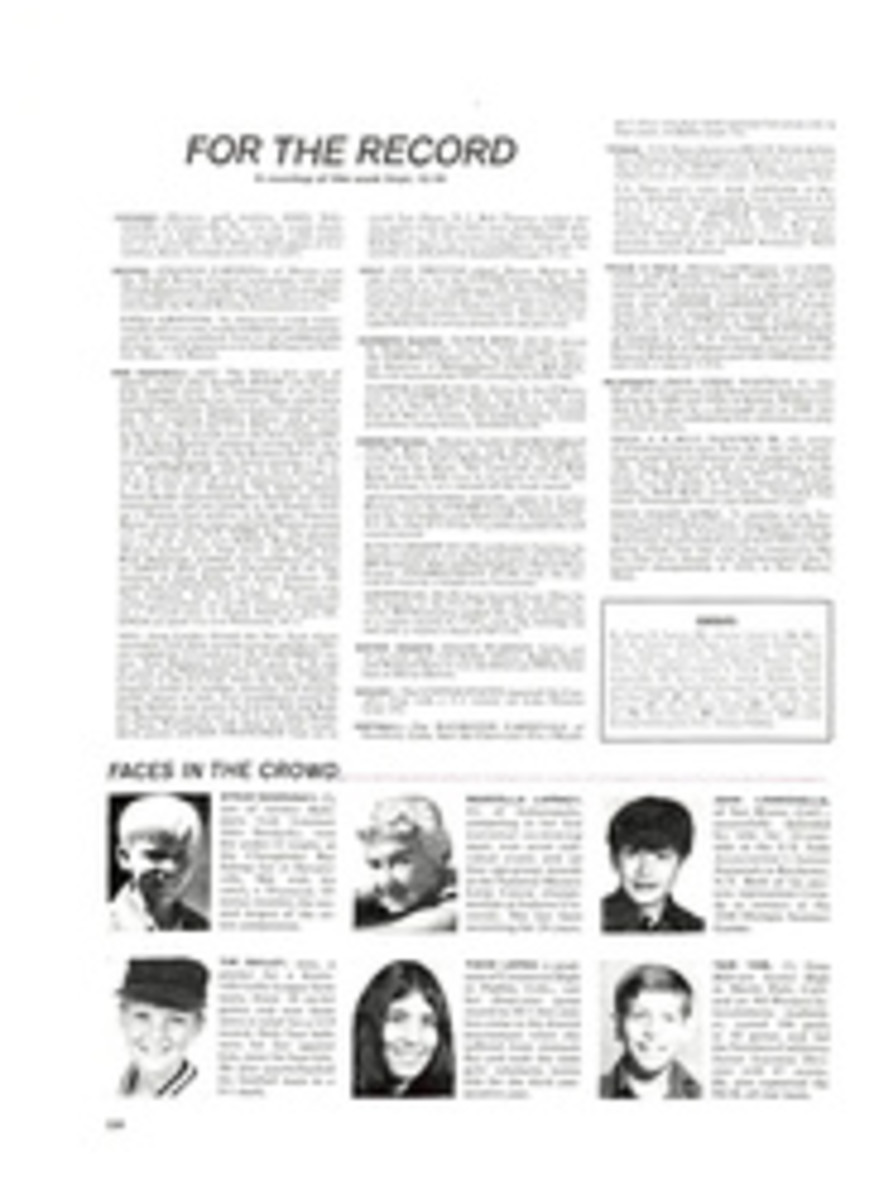
A heart in the highlands
Hamish MacInnes of Ballachulish—the name suggests a village postman out of Brigadoon. But MacInnes, who does happen to live in a whitewashed cottage in the Scottish Highlands, has been where they don't deliver mail. He is there now—in Nepal—standing amid treacherous crevasses, dazzling snowscapes, gigantic rocks and ice ridges sculpted over half a million years and looking up at the most dangerous 600 yards on earth—the unconquered sheer southwest face of Mount Everest, which soars into the clouds at 29,028 feet.
Everest was first conquered in 1953 by a more conventional route. Since then it has been scaled by teams from Switzerland, the United States, India and Japan, and the whole thing has begun to look like a milk run. But the southwest face is something else. To describe it as an unconventional route to the top is to indulge in classic understatement. It is a climb that the world's mountaineers regard as their purest challenge because when they have fought agonizingly to 26,000 feet, they have really just begun. They must move on. The final assault on straight-up rock is the equivalent of fighting the Empire State Building in temperatures of 40° below and worse with 60-knot winds whipping past and every breath into the oxygen mask an increasingly painful exercise.
The face has been tackled twice, abortively, by the Japanese, and in 1971 an international group also failed. Earlier this year Hamish MacInnes and 22 others in yet another international team—from Germany, Austria, Iran, Italy, Switzerland and Britain—reached the final base camp at 26,900 feet, but on May 23 they gave up amid a welter of claims and counterclaims that oxygen was short because of bad planning, that too many men were unfit, that there was an unseemly scramble of egos to decide who went first to the top.
MacInnes, who tackled Everest for the first time 18 years ago when he was only 21 years old, returned to Scotland in June. He had lost 15 pounds, his reflexes were shot and his dream of success against the ultimate began to fade into limbo. But two months later he was heading back to Katmandu and thence to Everest as a member of a new British expedition.
"I thought I wouldn't go at first," he said. "Then I realized this would probably be my last chance to be with a team that had a real possibility of making it. I don't feel physically strong enough, but the mountain has been booked by other teams, including the Japanese, for the next four years, and I won't get another crack at it. I wouldn't say I'm exhilarated, but it's something that eats away at you wherever you are and whatever you are doing."
MacInnes has a wisp of red beard and pale blue eyes and he smiles with a kind of self-disparagement about his obsession. He is a gentle man, hardly a burly, broad-shouldered attacker of mountains, but up where the great peaks rear like tombstones into the clouds, he seems to have enormous reserves of physical and mental strength. Even in his less demanding native hills, when you watch him climb he is a shrewd and careful mover, placing his hands on rock with the fastidious absorption of someone selecting a piece of Dresden china. In another mountaineering age he might have been called Simon or Rodney or Vincent, someone strong but elegant with the kind of exquisite bravery that made British officers complain about the noise at the evacuation of Dunkirk.
The prototype was George Leigh Mallory, who vanished "going strong for the top" in his 1924 attempt at Everest. He wore cardigans and a Norfolk jacket, woolen mittens and a snap-brim hat and sustained his heroics with a hamper from Fortnum & Mason containing such items as potted quail, p√¢té de foie gras and turtle soup. On this latest trip MacInnes and his companions are eating rice, yak meat and tinned beef.
For all the expedition's climbing credentials, its members recognize that the southwest face of Everest is in another league. "For starters," MacInnes explained before he left, "you must accept the hazards of lobar pneumonia, severe bronchial disease, snow blindness, glandular fever, mountain sickness, vertigo, hallucinations and the kind of exhaustion that is near to death. I thought I knew what it would be like but when I got above 25,000 feet last May I was appalled. You try to use as few oxygen bottles as you can and sometimes you are almost sobbing with despair and deep, deep exhaustion. There is a constant danger of your blood clotting in its attempt to carry more oxygen to the brain, and if that happens, you may suffer permanent mental damage. I know my reflexes were affected by the May climb. I drive an E-type Jaguar, and my reactions to fast cornering are not nearly as sharp as they were."
Above 25,000 feet men are presumed to deteriorate physically, and oxygen is life. It is therefore crucially important to MacInnes and the team who are making this last 1972 attempt that they have enough for the one-day up-and-back assault to the top. "When we have a go, we will need all we can carry, and each bottle weighs 12 pounds," MacInnes said. "You have to balance what you can physically haul around and how much you need to stay alive."
The intensity of the cold is difficult to imagine. MacInnes wears three eiderdown suits, overalls, three pairs of socks, triple-layered boots covered by foam-lined outer boots, two layers of gloves, face mask, goggles and oxygen mask. "I once touched a metal tent strut up there," he said, "and despite my gloves, the skin was stripped from my fingers. I touched a bare oxygen bottle at night and got instant frostbite. And yet everything can change suddenly. The sun emerges if the cloud base lifts, and unless you are well masked, the ultraviolet rays can ruin your lips in an hour. Then the cloud sweeps back and the temperature nose-dives again."
There are rockfalls and avalanches as the sun melts ice and snow at the summit. "I don't wear a safety helmet because it is one more cumbersome misery to add to all the rest," MacInnes said. "I'm a fatalist. You hear those rocks coming down like shellfire, and you can't even see them because they are so fast. You just hear the whine, and they rocket through tents and gear."
MacInnes is not a romantic, and like all mountaineers he finds it difficult to provide a rationale, if there is one, for what he does. "I can't properly say why I want to do this," he said. "It's not all stiff-upper-lip for Queen and country, you know. Sure, there are big financial rewards—selling the film we take, hundreds of thousands of postcards, lecture tours. But I love mountains, and to me this Everest face represents one of the greatest physical challenges any man can confront. Last time up, we lay huddled in our two-man tents at night playing Beethoven and Brahms and Joan Baez on cassettes, and we didn't think about death. We just contemplated what we had to do next day. We are essentially realists.
"Other attempts have failed because of bad planning and childish dissension. This time we will have a compact team whose members know each other well and get along. We need each other and we rely on our individual efficiency and nerve. We are trying together to do something that has never been achieved before. That's really what it is all about for me."
Of course, if and when MacInnes and his fellow climbers do drag themselves to 29,028 feet they, and any others who come after, will not really accept the southwest face as the last word. In their kind of game there is always another ultimate.
PHOTO

